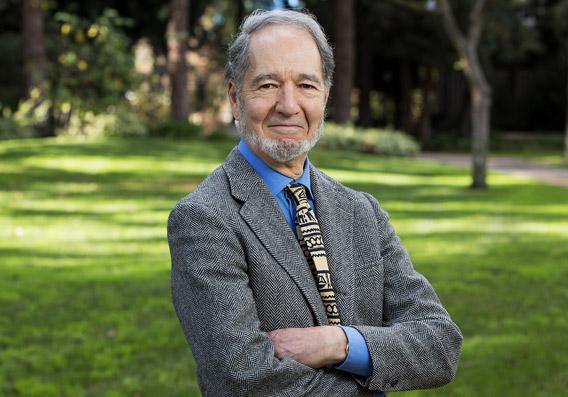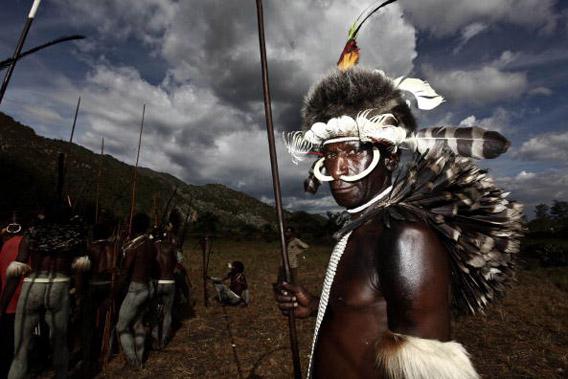Jared Diamond is a master of cultural and historical bricolage. His books weave epic stories about the human condition from the disparate cultural practices of a wide range of people living in different environments. In his Pulitzer Prize–winning Guns, Germs, and Steel, Diamond used this eclectic empiricism to tell a story about the role of geography in human history. In Collapse, he used the same approach to stage a morality play about the dangers of disregarding those geographic conditions. In his new book, The World Until Yesterday: What Can We Learn from Traditional Societies?, Diamond probes the differences between modern cultures and traditional societies that subsist through hunting and gathering, and he comes to several bold conclusions about their relative merits. His examples are evocative and his narration is powerful, but Diamond ultimately fails to substantiate his arguments. By the end of the book, it is impossible to tell if one has finished reading a masterpiece of rigorous analysis or a masterfully written collection of just-so stories.
Each chapter offers a window into a specific cultural practice. These chapters typically follow this script: He posits a difference between traditional and modern society, cherry-picks a few examples from ethnographic or archaeological sources, and provides an evaluation about potential benefits (and/or drawbacks) of the traditional compared with the modern approach. The choice of topics is eclectic: Danger, religion, diet, dispute resolution, childrearing, linguistic diversity, and the treatment of the elderly all get a hearing. Other classic subjects of anthropological analysis are missing. For example, there is no substantive discussion of kinship, sex and gender, or art. Diamond illustrates the chapters with a scattershot collection of ethnographic examples drawn from, among others, the !Kung of the Kalahari Desert, the Ache of the Paraguayan rainforest, the Nuer of East Africa and, most commonly, several groups from New Guinea, where he has conducted extensive research.
Diamond has a gift for storytelling. He presents his examples in a seductively readable voice with unflinching confidence, which makes his conclusions about the similarities and differences between traditional and modern society seem like common sense. But as I read the text, I found that I agreed with Diamond in inverse relation to my pre-existing knowledge about whatever subject he was addressing. When Diamond was writing about topics that I know in depth, I felt as though he was leaving out important information; when I didn’t know what he was writing about, I was thoroughly convinced. Diamond is a generalist and will always paint with a brush that a specialist finds too broad. The danger lies not in simplifying source material by leaving out extraneous details, but in selectively highlighting only the facts that support one’s argument and casting contravening cases aside.
It’s difficult to tell if Diamond’s selection of evidence is fair but necessarily limited, or mendaciously results-driven. Take his section on dispute resolution. Here he compares “state” systems of civil dispute resolution (he is almost exclusively referring to the justice system of the United States) with “non-state” systems of hunter-gatherers. He argues that state civil justice systems have at least three major defects: No. 1, civil trials take a long time, “often up to five years”; No. 2, state civil justice favors wealthy parties by not forcing the winner of a trial to bear costs; and No. 3, civil justice is concerned with damages, not emotional closure and reconciliation. Traditional societies, on the other hand, primarily use dispute resolution to quickly repair relationships so that they do not spill over into warfare.

Courtesy of Viking Adult
In Diamond’s usual fashion, he supports these arguments by way of anecdote. We learn, for example, that “no civil cases were being tried in Riverside County” as he was writing the book and that “one close friend” was involved in a contentious inheritance battle that was so traumatic that the “friend and her sister expect never again to speak to their brother as long as they live.” Diamond provides us with no way of knowing if these examples typical or exceptional. Are they constituent elements of the administration of civil justice or aberrant features caused by local conditions? For example, we never learn how common it is to wait “five years” for a civil case to be resolved. Other questions arise: Are there traditional societies that postpone the resolution of disputes for such a length of time? Do traditional societies ever postpone the resolution of certain kinds of disputes because of an intervening crisis, as Riverside County has done? Do the individuals who participate in traditional dispute resolutions actually feel reconciled with the individuals who harmed them?
Nested in these questions is a larger one about conceptual categories: Is Diamond really comparing apples to apples? In his section on dispute resolution, he compares all forms of traditional dispute resolution, war excepted, to the court trial, which is a rare and highly ritualized occurrence. Most civil disputes never reach court, and those that do usually are resolved through negotiation and settlement. Perhaps the differences between traditional and modern dispute resolution systems would seem less dramatic if he compared the most common forms present in each society. Another example: Diamond explains that “for our purposes in this book” we must “define warfare in a way that doesn’t define traditional warfare between small bands out of existence.” This leads Diamond to compare the tit-for-tat violence that animates warfare in traditional societies to the state-sponsored warfare of modern society. With such an expansive definition, Diamond may be papering over modern phenomena that might be more akin to traditional warfare than to World War II. Once again, this makes the “traditional” seem more distant from the “modern” than it really is.
Diamond is especially vulnerable to charges that he is making improper comparisons or ignoring contrary evidence because he fails to provide footnotes in the text, making only sporadic and often oblique references to his sources. I wondered, as I read, whether Diamond had read Robert Ellickson’s book Order Without Law, about informal dispute resolution in 20th century Northern California—disputes that appear more similar to his examples of dispute resolution in traditional societies than those of the modern society in which Ellickson’s informants actually lived. I also wondered if he had read the myriad studies comparing the “English Rule” (as the “loser pays” system is often called in academic debates) to the system of bearing one’s own litigation costs. If so, why doesn’t he engage with the arguments in these works that contradict his conclusions? And if not, where else has he failed to do his homework?

Courtesy of UCLA
Usually I could quickly answer these questions by turning to his notes. But Diamond eschews footnotes, which could “deter potential readers” by increasing the book’s “length and price.” In the back of the book, he instead lists a series of texts that he thinks provides a reader with a more thorough understanding of the sources. He also published a general list of “further readings” on his publisher’s webpage. He does mention the Ellickson book there, though he makes no meaningful attempt to engage with its thesis, and he cites a single, 30-year-old law review article about the “loser pays” system. These are thin foundations for Diamond’s sweeping claims.
When I began anthropological fieldwork in graduate school, I finally understood that old admonition—show your work! Citations assure the reader that you have engaged with the strongest counterarguments and facts. It’s harder to cheat when you have to explicate the steps you took to reach an answer.
I was particularly struck by a passage near the end of the book in which Diamond explains why, in a break from his previous practice, he decided not to publish the names of his New Guinea informants. Publishing names, he claims, is “standard practice among journalists” and was “formerly the practice among anthropologists,” but “anthropologists now appreciate that their informants may be vulnerable and may suffer harm if their behavior and views became known.” What Diamond does not tell us here is that he was recently sued for libel by two New Guinea men who claimed that they never engaged in the violent acts that Diamond ascribed to them in a New Yorker article. I find it difficult to believe that these lawsuits did not factor into Diamond’s decision to leave out identifying information. And if Diamond omits such a key piece of information in this section, what else is he leaving out? My lingering questions about sources and framing turn what could have been a delightful and informative introduction to anthropology and human diversity into a foggy text that obscures more than it illuminates.
